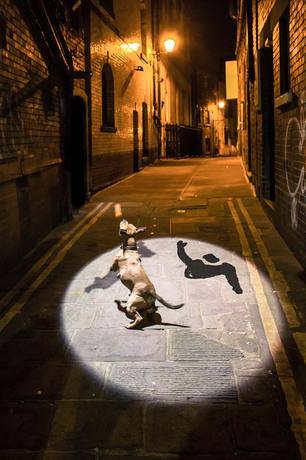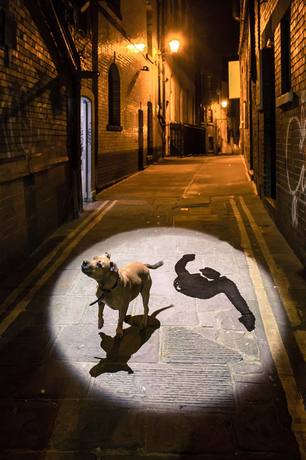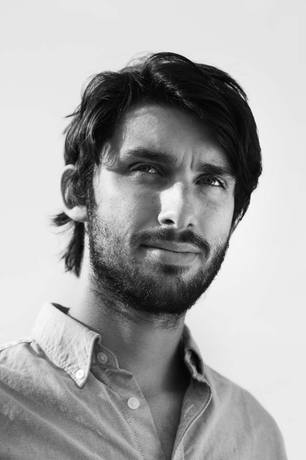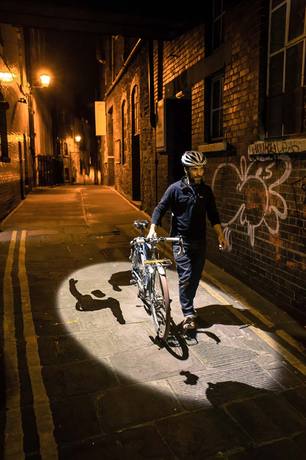“Shadowing” Street Project, Bristol
A haunting and artistic reminder of Britain’s CCTV culture in this interactive installation



Walk down the streets of Bristol—a university city in England’s West Country—after dark, and while passing under a streetlight, you might find yourself sharing the illuminated circle with the ghosts of visitors past: someone else’s shadow walking beside you. Meanwhile, your own shadow is spirited away to accompany the next person who walks under the light. That’s the haunting premise of “Shadowing,” a new interactive art piece that was the winner of Watershed’s Playable City Award 2014. The award challenges artists and creatives from around the world to produce an artwork that engages with the notion of cities as playable, malleable and idiosyncratic public spaces.


“Shadowing” (which is taking over eight streetlights in Bristol) was created by Canadian interaction designer Jonathan Chomko and British designer Matthew Rosier. The installation plays on our interaction with the city and turns established facts upside down by introducing a curious, joyful time-lapse to the street lights. If you stand still long enough, it reaches even further back in time and plays back the shadows of more previous visitors. CH got the chance to have a talk with the designers about the project, which was inspired partly by Britain’s extensive CCTV culture—the country has a camera for every 11 people.
We started off by just thinking about the essence of the city, what it’s about—and people are what make a city relevant.
How did “Shadowing” come about?
Matthew Rosier: Well, we started off by just thinking about the essence of the city, what it’s about—and people are what make a city relevant. We wanted to use human presence in some way and to augment that and then create further interaction.
Jonathan Chomko: Our hypothesis basically was that you go to a city to be around other people.
MR: And we especially found that the project had to be something very embedded, rather than an addition to the city.

How does it work?
JC: It’s a projector, a camera and a computer, and the camera does some fancy image processing and uses the infrared spectrum—that’s what it images in—so it doesn’t see the projection that’s on the ground, just the things that are moving underneath. It isolates that movement, which becomes the shadow.
There is a connection to CCTV and the recording of the individual in the public space, what has the reaction been so far?
MR: Some of the feedback has been, “Is this creepy?” But in a way, it’s almost counteracting that through what it does—through revealing the CCTV process, it’s actually in essence less creepy than CCTV.
JC: It’s quite fun and relaxed, and slow—it takes a while for things to happen.


How has it been working with Watershed on the project?
MR: Watershed were very brave, we were amazed all along the process.
JC: The technical solution we have now was the most ridiculous thing we could think of when we were pitching—like, “If all else fails, we’ll just stick projectors on streetlights,” and everyone around the table was like, “Oh yeah, it won’t come to that…”
And what will happens to the shadows after Halloween, when the project finishes?
MR: That’s a tricky question, because there’s a system—so we do get back GIFs of all the people who are walking underneath.
JC: It’s not something that we’ve designed as something to keep. If people could keep the shadows and share and find themselves on the internet, then it takes away from the interaction between the people in the street.
“Shadowing” is on until 31 October in Bristol, download the map for exact locations.
Images courtesy of Shadowing












